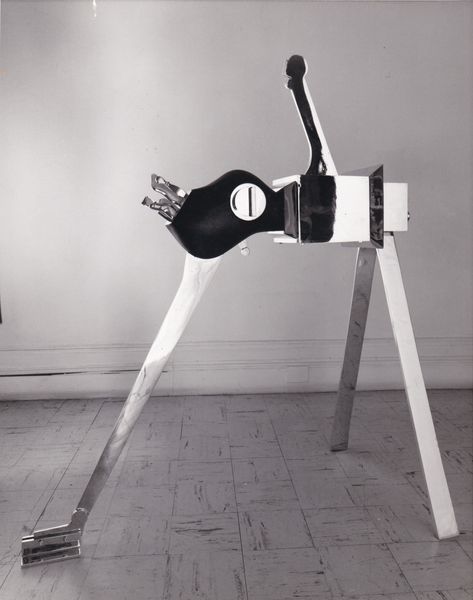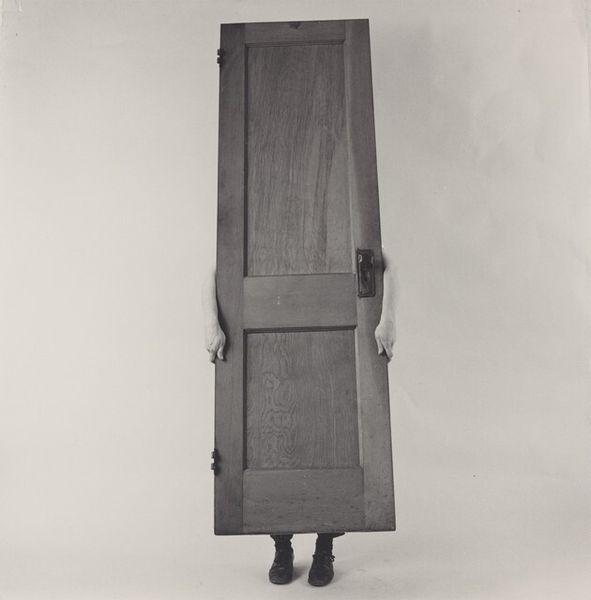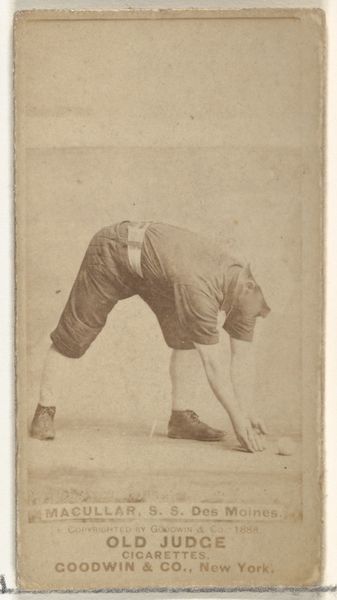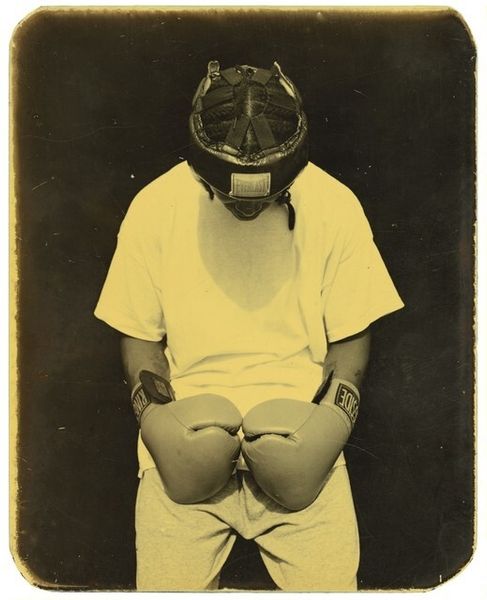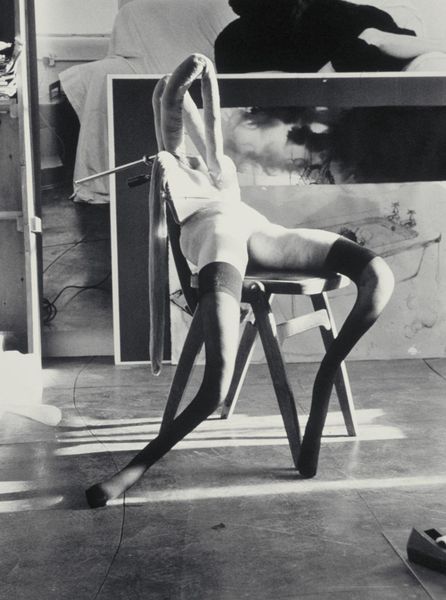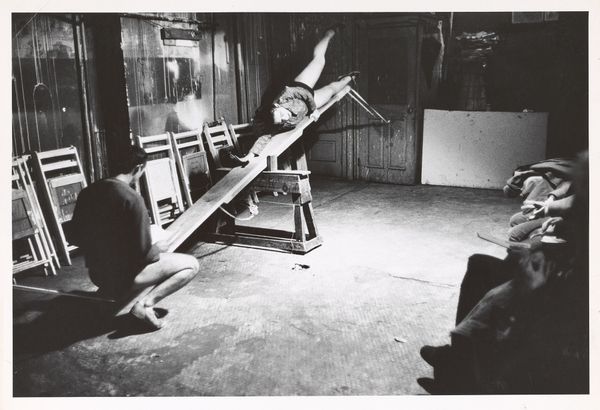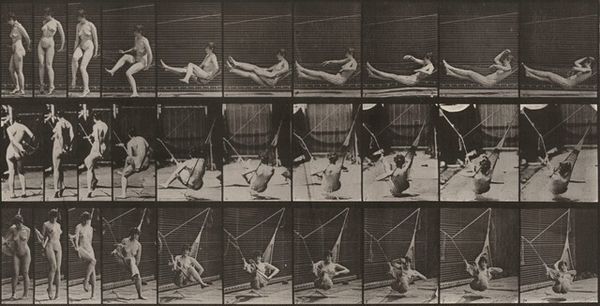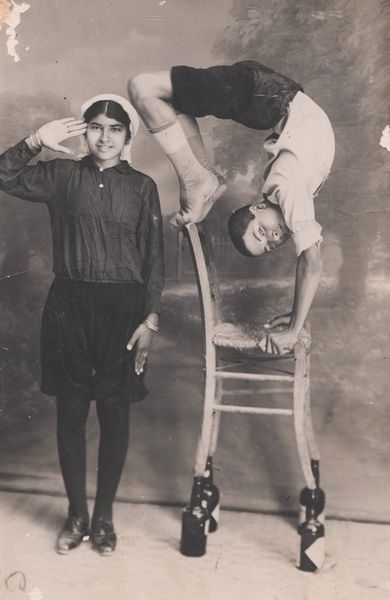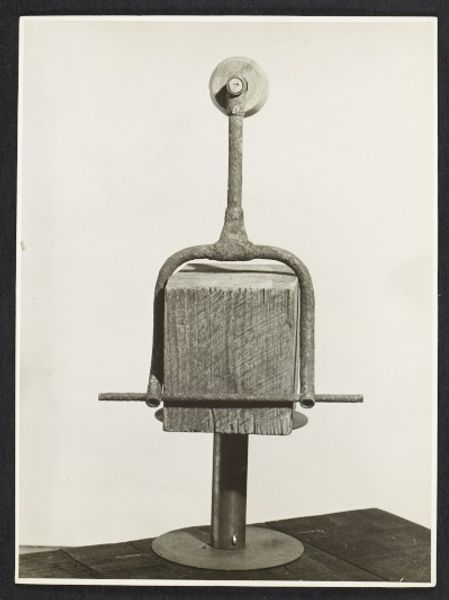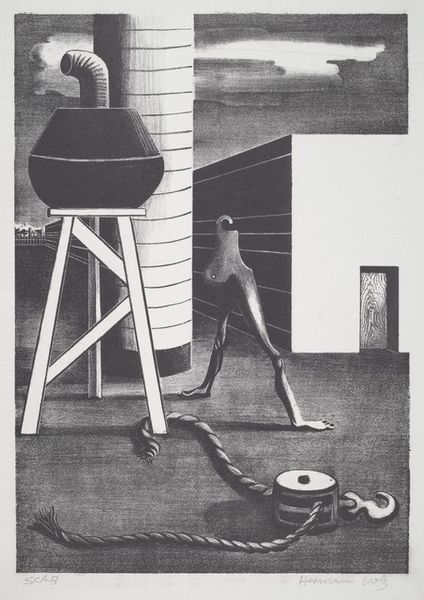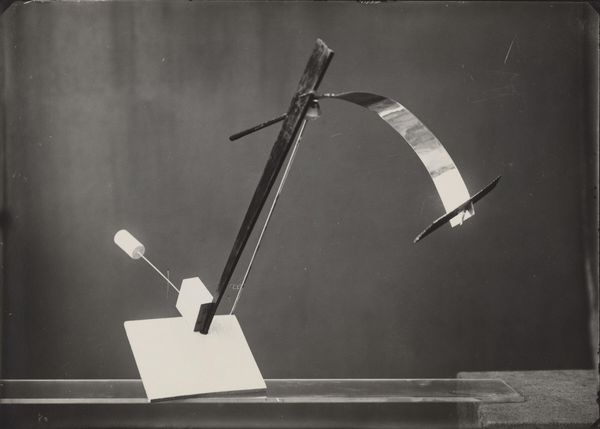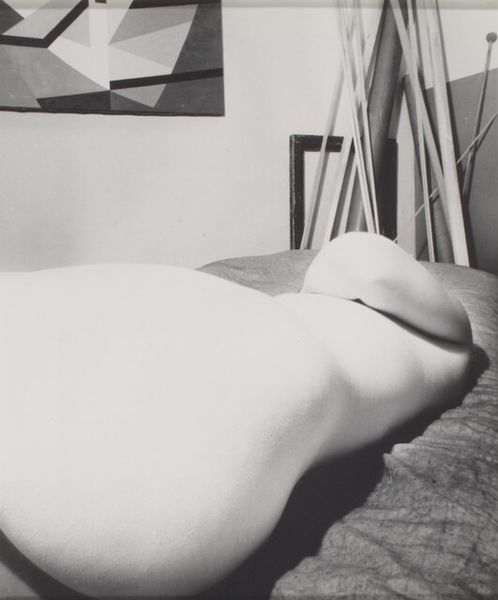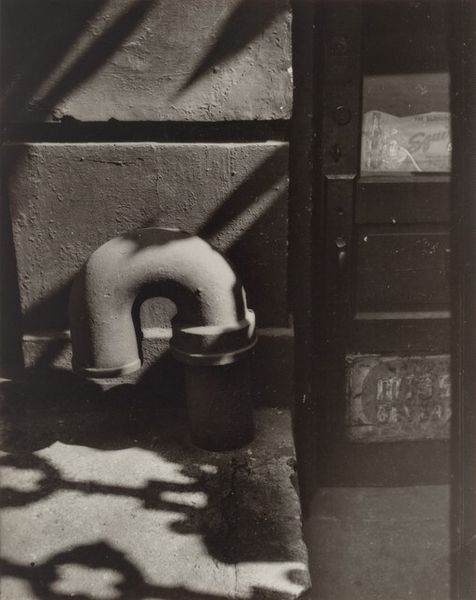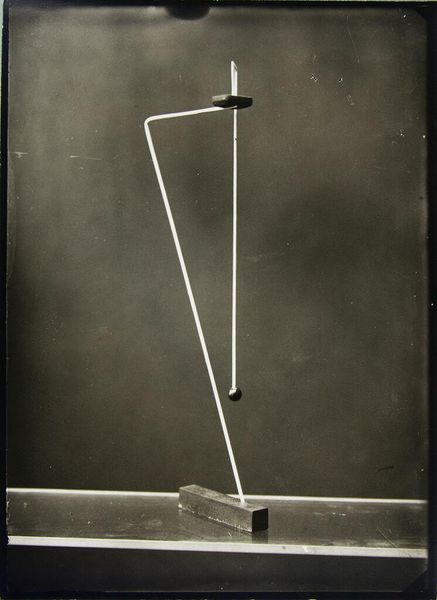
#
wedding photograph
#
black and white photography
#
portrait image
#
black and white format
#
b w
#
black and white theme
#
portrait reference
#
portrait head and shoulder
#
black and white
#
monochrome
Dimensions: image: 10.95 x 10.95 cm (4 5/16 x 4 5/16 in.) sheet: 25.4 x 20.16 cm (10 x 7 15/16 in.) framed: 57.79 x 52.71 cm (22 3/4 x 20 3/4 in.)
Copyright: National Gallery of Art: CC0 1.0
Curator: Here we have Ann Hamilton's "body object series #2, stool," created sometime between 1984 and 1991. It’s a black and white photograph from a series where the artist uses everyday objects to obscure or alter the human form. Editor: It’s certainly striking. The stool as a stand-in for a head is so simple, yet unsettling. The starkness of the monochrome only adds to the kind of sterile, almost clinical, feeling it evokes. Curator: Precisely! The choice of a common stool implicates mass production and utilitarian design. It suggests how we, as bodies, are often fitted and confined by such commonplace objects—like cogs in a machine. The materials themselves speak to broader social systems. Editor: It makes me consider the wider socio-political implications. How does the historical moment inform this imagery? This period was marked by a growing awareness of body image and identity, particularly in feminist discourse. This could be read as a visual comment on objectification and the societal pressures on women's bodies to conform, obscured, and stripped of individual identity. Curator: I agree. Looking at the graininess of the print, it seems like it may have been reproduced for mass circulation at some point; did it become popularized through certain artistic channels and take on different meanings in circulation? Editor: Perhaps within feminist art circles or journals. Its very ambiguity, this sort of headless portrait, is powerful. It can represent suppression, anonymity, or even a playful subversion of portraiture's conventions. Consider the historical role of portraits to commemorate and celebrate the individual; this rejects all that. Curator: And it's interesting to consider how Hamilton uses her body. It begs the question of labor and presence of the body within its own creation of a piece that obscures identity— the role and the making intertwine into something cyclical here. Editor: Indeed, it's a provocative piece that opens many doors into conversations surrounding the self, societal constraint, and visual culture. I’ll need some time to unpack that further. Curator: I completely concur. Hamilton's piece allows for a critical reflection on the interactions and systems that affect us every day.
Comments
No comments
Be the first to comment and join the conversation on the ultimate creative platform.
